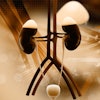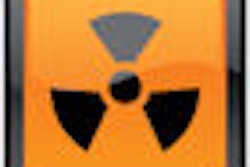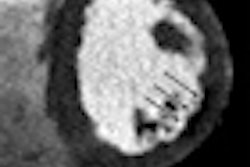The use of advanced diagnostic imaging in physician offices and emergency departments has increased dramatically over the past decade, according to a report issued this week by the Centers for Disease Control and Prevention's (CDC) National Center for Health Statistics.
The report, titled "Health, United States, 2009," used data from the National Ambulatory Medical Care Survey and the National Hospital Ambulatory Medical Care Survey to analyze trends in advanced imaging use from 1996 to 2007.
It showed that advanced imaging scan rates during visits to physician offices and hospital outpatient visits more than tripled during this period among patients across the board, and that the use of advanced imaging during emergency department visits increased fivefold among adults younger than 65 years of age and quadrupled among adults 65 and older during this time frame.
Advanced medical imaging has become the standard of care, according to the study's lead author, Amy Bernstein.
"Most people could not conceive of going to the doctor without [getting] laboratory tests, vaccinations, x-rays, PET scans, or CAT scans," she said in a statement. "And they'd think that hospitals and doctors without access to those things would be in the dark ages."
In 2007, 3.4% of physician office and hospital outpatient visits included advanced imaging scans ordered or provided during the visit (including 3.2% of patients younger than 65 and 4.1% of patients 65 and older). Also that year, 14.2% of emergency department visits included advanced imaging scans ordered or provided during the visit (12.2% younger than 65; 25.8% 65 and older), according to the report.
The report also presented the following:
- In 2006, there were more than 7,000 sites offering MRI, with an estimated 27 million MRI procedures performed.
- In 2007, more than 10,000 CT units were in operation at more than 7,600 hospital and nonhospital sites, and the availability of PET and other imaging modalities has been steadily increasing.
- The site of imaging services has diffused from hospital inpatient and outpatient settings to nonhospital settings such as physician offices or radiology centers.
- During the past decade, the number of freestanding diagnostic imaging centers owned by radiologists, other specialists, private investors, or for-profit companies has more than doubled.
- Medicare Part B spending for imaging services under the physician fee schedule more than doubled between 2000 and 2006, from $6.9 billion to $14.1 billion.
- Between 2000 and 2006, the percentage of Medicare Part B spending for imaging performed in hospital settings decreased from 35% to 25%, while the share of imaging spending increased in physician offices from 58% to 64% and in independent diagnostic testing facilities from 7% to 11%.
The report found that equitable use of imaging modalities varies, according to Bernstein. For example, in use of mammography for detecting early breast cancer, there are differences by race and ethnicity: African-American and white women are more likely to have had a mammogram in the past two years than Hispanic or Asian women, she said.
The report does not address the issue of overutilization, Bernstein said.
"We document trends and use of different kinds of technologies, but it's very hard to say anything about appropriate or inappropriate use," she said. "That requires a much more in-depth study by clinicians."
By Kate Madden Yee
AuntMinnie.com staff writer
February 18, 2010
Related Reading
Studies spotlight high CT radiation dose, increased cancer risk, December 14, 2009
NEJM study: Imaging procedures, radiation growing, August 26, 2009
MedPAC: Self-referring docs use more imaging, June 23, 2009
Study shows CT use has increased, diagnostic yield has not, March 3, 2009
CT utilization spikes among nonradiologists, December 17, 2008
Copyright © 2010 AuntMinnie.com




















